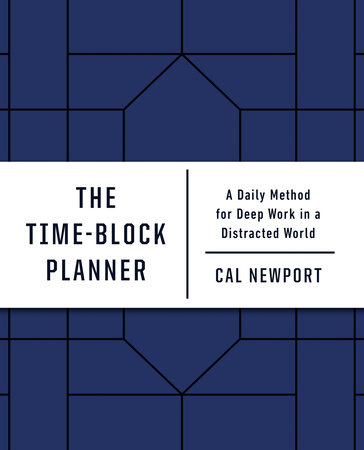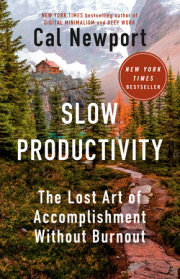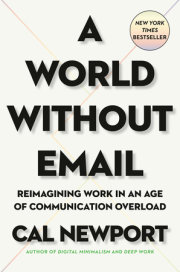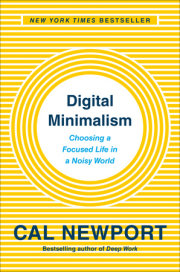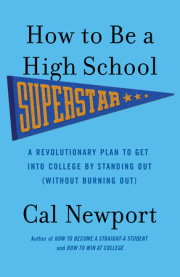Excerpt from the Introduction:
The Power of Time Blocking
The Time-Block Planner implements a personal productivity system that I’ve perfected over the past fifteen years. During this period, it helped me earn a PhD in computer science at MIT and then go on to achieve tenure as a professor at Georgetown University, while simultaneously publishing six books for general audiences, including multiple bestsellers. Most importantly—and one of the aspects that I believe sets my system apart from any other—I did all of this while rarely working past 5:30 p.m. I need my evenings free to wrangle my three young kids. My productivity system made all this possible, and the planner you’re currently holding will enable you to implement it in your own professional life.
As you’ll learn in the detailed instructions that follow, the core of my system is a simple but powerful strategy called time blocking. Most people approach their workday by trying to cross things off a task list in the small slivers of time that remain between attending meetings and reacting to emails and instant messages. Time blocking, by contrast, requires you to figure out in advance how you want to spend every minute of your day. Instead of trying to generally “be productive,” you partition your time into blocks and assign specific work to them. This critical shift from managing tasks to managing time can massively increase the amount of useful work you accomplish. It also provides an anxiety-reducing sense of control over your schedule.
I didn’t invent time blocking. As soon as people began thinking seriously about personal productivity, they began preaching the benefits of this strategy. In his autobiography, Benjamin Franklin explains, “Every part of my business should have its allotted time.” He then provides a sample time-block schedule that divides up his waking hours into blocks, each dedicated to a different productive activity. In his 1967 classic, The Effective Executive, one of the first professional productivity books ever written, Peter Drucker echoes Franklin’s commitment to managing time instead of tasks. “Effective executives, in my observation, do not start with their tasks,” he writes. “They start with their time.” A more recent article, appearing on a popular career website, reports that both Bill Gates and Elon Musk deploy variations of time blocking to help fuel their “freakish” levels of accomplishments.
This technique, in other words, is one that serious productivity aficionados have been deploying with great success for many years. This planner will help you follow their lead by providing you the tools needed to design and execute your own effective time-block schedules. What you won’t find in this planner is a substitute for your calendar. I assume you already manage your meetings and appointments elsewhere, such as the shared digital calendars that more and more organizations require their employees to use. Though you will copy events from your calendar into your daily time-block schedules, the planner is not their long-term home.
This planner also doesn’t provide room for you to permanently store all of the various tasks and obligations for which you’re currently responsible. The modern knowledge worker is burdened with many hundreds of these responsibilities at any given time; it’s simply not practical to keep track of them in a paper notebook that’s replaced multiple times a year. When using this planner, you will copy selected tasks from whatever system you use into your daily time-block schedules, but as with meetings and appointments, this will not be the primary place you store them.
The time-block planner instead focuses on a narrower objective: getting the most out of the time and attention you have available to allocate toward work each day. You already know what you need to do. This planner helps you do more of it, and do it more intentionally, than you ever thought possible. But enough with the preamble. Let’s dive into the details of exactly how this planner works . . .
Copyright © 2020 by Cal Newport. All rights reserved. No part of this excerpt may be reproduced or reprinted without permission in writing from the publisher.





